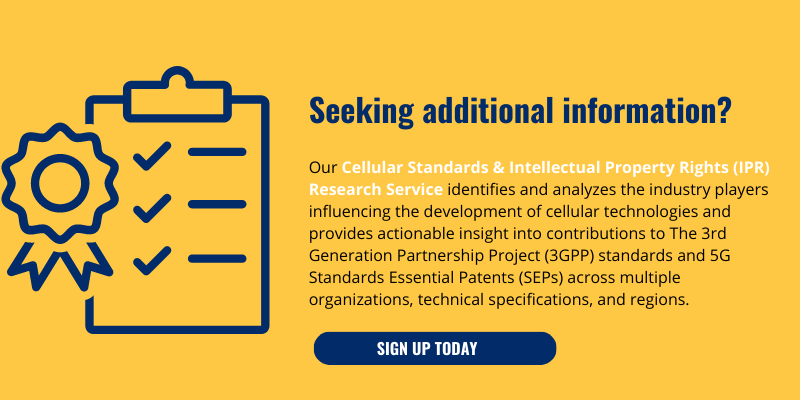Behind every cellular standard is the blood, sweat, and tears of thousands of companies within The 3rd Generation Partnership Project (3GPP). These contributors fall under various Working Groups (WGs) to create a consensus on specification requirements and industry best practices—vital to mobile innovation. This short post will list several WGs that, without them, 3GPP’s cellular standard evolution would dissipate.
RAN1
RAN1 is an essential WG in 3GPP as it’s responsible for the specification of the physical layer of the radio interfaces for the following (among other technologies):
- User Equipment (UE)
- Evolved Universal Terrestrial Radio Access (E-UTRA)
- Next-Generation Radio Access Network (NG-RAN)
The RAN1 WG approval process is difficult and requires the involvement of many stakeholders. While RAN1 receives the most contribution submissions among WGs, it also gets the lowest number of approvals.
RAN2
RAN2, also leveraged by other 3GPP WGs, produces normative specifications. Its responsibilities include the following:
- Radio interface architecture and protocols
- Specification of the Radio Resource Control (RRC) protocol
- Radio Resource Management (RRM) procedures
3GPP views RAN2 as an important working group for UE because, without it, there would be no way to specify media and resource access control mechanisms on which 5G-connected devices rely.
RAN4
RAN4 manages Radio Frequency (RF) aspects of UTRAN/E-UTRAN/New Radio (NR). The following aspects are covered under the RAN4 WG:
- Transmission and reception parameters
- RRM
- Channel demodulation
- Channel State Information (CSI) reporting
The RAN4 WG helps 3GPP contributors identify potential problems in implementation for UE design. For example, RAN4 could detect power consumption issues for radio signaling and spectrum support.
RAN5
RAN5 is accountable for UR conformance testing at the radio interface handling mobile networks. The working group relies on other 3GPP groups to define standard requirements.
Due to its niche focus, RAN5 has a smaller number of contributors than other RAN groups However, its top contributors are more diverse than the other working groups.
SA2
The purpose of the SA2 WG is to develop the overall 3GPP system architecture services. If a 3GPP entity needs guidance on how to link to another, SA2 can provide key insight.
In general, SA2 earns its characterization as an essential 3GPP working group because it outlines the major entities across a 5G network, their functionality, and the information exchange between them.
SA3
Security and privacy in 3GPP systems is the main function of the SA3 WG. This extends to 3GPP improvements for the Internet of Things (IoT) and vertical industries with sub-group SA3-LI for lawful interception and regulatory requirements.
CT1
The CT1 WG is intended to standardize the production, enhancement, and maintenance of specifications for UE to core network interfaces and interfaces within the core network.
Download the Whitepaper
Want to know about some of the key trends shaping 3GPP standardization and who the top contributors are to these WGs? Download ABI Research’s Identifying 3GPP Contributions And How These Map To Activities whitepaper today.
This content comes from the company’s Cellular Standards & Intellectual Property Rights (IPR) Research Service.





